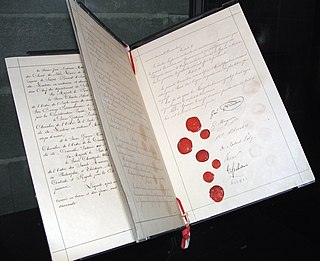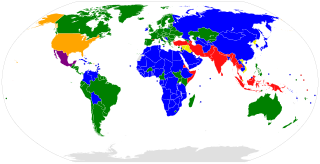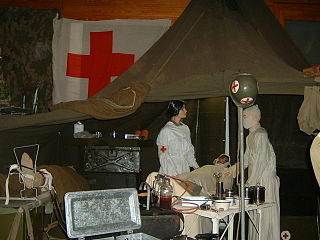
A war crime is an act that constitutes a serious violation of the laws of war that gives rise to individual criminal responsibility. Examples of war crimes include intentionally killing civilians or prisoners, torturing, destroying civilian property, taking hostages, performing a perfidy, raping, using child soldiers, pillaging, declaring that no quarter will be given, and seriously violating the principles of distinction and proportionality, such as strategic bombing of civilian populations.

Civilian casualties occurs in a general sense, when civilians are killed or injured by non-civilians, mostly law enforcement officers, military personnel, or criminals such as terrorists and bank robbers. Under the law of war, it is referred to civilians who perished or suffered wounds as a result of wartime acts. In both cases, they can be associated with the outcome of any form of action regardless of whether civilians were targeted directly or not.
In general, a civilian is "a person who is not a member of the military or of a police or firefighting force". The definition distinguishes from persons whose duties involves risking their lives to protect the public at large from hazardous situations such as terrorism, riots, conflagrations, or wars. It also does not include "criminals" in the category, as authorities and the media wants to distinguish between those who are law-abiding and those who are not.

The law of war refers to the component of international law that regulates the conditions for war and the conduct of warring parties. Laws of war define sovereignty and nationhood, states and territories, occupation, and other critical terms of international law.
Combatant is the legal status of an individual who has the right to engage in hostilities during an international armed conflict. The legal definition of "combatant" is found at article 43 of Additional Protocol One to the Geneva Conventions of 1949 [AP1]. It states that "Members of the armed forces of a Party to a conflict are combatants, that is to say, they have the right to participate directly in hostilities."
Non-combatant is a term of art in the law of war and international humanitarian law, describing civilians who are not taking a direct part in hostilities; persons—such as combat medics and military chaplains—who are members of the belligerent armed forces but are protected because of their specific duties ; combatants who are placed hors de combat; and neutral persons not involved in fighting for one of the belligerents involved in a war. This particular status was first recognized under the Geneva Conventions with the First Geneva Convention of 1864.
International humanitarian law (IHL) is the law that regulates the conduct of war. It is that branch of international law which seeks to limit the effects of armed conflict by protecting persons who are not participating in hostilities, and by restricting and regulating the means and methods of warfare available to combatants.

Protocol I is a 1977 amendment protocol to the Geneva Conventions relating to the protection of victims of international conflicts, where "armed conflicts in which peoples are fighting against colonial domination, alien occupation or racist regimes" are to be considered international conflicts. It reaffirms the international laws of the original Geneva Conventions of 1949, but adds clarifications and new provisions to accommodate developments in modern international warfare that have taken place since the Second World War.

Protocol II is a 1977 amendment protocol to the Geneva Conventions relating to the protection of victims of non-international armed conflicts. It defines certain international laws that strive to provide better protection for victims of internal armed conflicts that take place within the borders of a single country. The scope of these laws is more limited than those of the rest of the Geneva Conventions out of respect for sovereign rights and duties of national governments.

Protocol III is a 2005 amendment protocol to the Geneva Conventions relating to the Adoption of an Additional Distinctive Emblem. Under the protocol, the protective sign of the Red Crystal may be displayed by medical and religious personnel at times of war, instead of the traditional Red Cross, or Red Crescent symbols. People displaying any of these protective emblems are performing a humanitarian service and must be protected by all parties to the conflict.

The al-Quds 101 Rocket is a homemade rocket made and used by the Palestinian Islamic Jihad for use in attacks against Israel. The al-Quds 101 is most likely similar to the Qassam rocket series used by Hamas.
The term lawful enemy combatant is defined in the Military Commissions Act of 2006; the term is used as an exclusionary term to prevent most of those who qualify under the definition from being an unlawful enemy combatant.
Protective signs are symbols to be used during an armed conflict to mark persons and objects under the protection of various treaties of international humanitarian law (IHL). While their essential meaning can be summarized as "Don't shoot" or "Don't attack", the exact conditions implied vary depending on the respective sign and the circumstances of its use. The form, shape and color of these signs are defined by the rules of IHL. Usually, they are easy to draw in order to make even an improvised use as easy as possible, and they were chosen to be as concise, recognizable and visible as possible under all circumstances.

The Martens Clause was introduced into the preamble to the 1899 Hague Convention II – Laws and Customs of War on Land.
The clause took its name from a declaration read by Friedrich Martens, the Russian delegate at the Hague Peace Conferences of 1899. It reads as follows:
Until a more complete code of the laws of war is issued, the High Contracting Parties think it right to declare that in cases not included in the Regulations adopted by them, populations and belligerents remain under the protection and empire of the principles of international law, as they result from the usages established between civilized nations, from the laws of humanity and the requirements of the public conscience.
The Rule of Law in Armed Conflicts Project is an initiative of the Geneva Academy of International Humanitarian Law and Human Rights to support the application and implementation of the international law of armed conflict.
Jean Simon Pictet was a Swiss citizen, jurist, legal practitioner working in international humanitarian law. First as a secretary-jurist, and then as a senior executive and Vice-President of the International Committee of the Red Cross (ICRC), Pictet was instrumental in drafting the 1949 Geneva Conventions for the protection of victims of war, their Commentaries, and negotiating the 1977 Additional Protocols. He also proposed the Red Cross Movement’s seven Fundamental Principles, which were adopted at Vienna in 1965: Humanity, Impartiality, Neutrality, Independence, Voluntary Service, Unity and Universality. In 1989, an international humanitarian law competition for students was founded and named after him.

Protected persons is a legal term under international humanitarian law and refers to persons who are under specific protection of the 1949 Geneva Conventions, their 1977 Additional Protocols, and customary international humanitarian law during an armed conflict.







